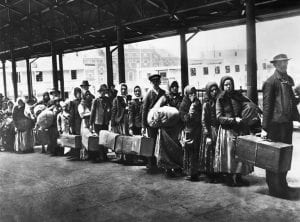Greenland, home to the world’s second-largest ice sheet, is rapidly losing its ice. This isn’t just a faraway problem for scientists to worry about—it’s a global issue that affects all of us. But why is this happening, and what does it mean? Let’s break it down.

Why Is Greenland’s Ice Melting?
Greenland’s ice sheet covers about 80% of the country. It’s so big that if it melted completely, sea levels around the world would rise by about 7.4 meters (24 feet). Over the last few decades, temperatures in the Arctic have been rising twice as fast as the global average. Warmer air melts the ice from above, while warmer ocean water melts it from below. These processes are speeding up, causing Greenland to lose billions of tons of ice yearly.
One key concept in understanding the melting ice is albedo. Albedo is a measure of how much sunlight a surface reflects. Think about it this way:
- Ice and snow are bright and white, reflecting most sunlight back into space and cooling the planet.
- Darker surfaces like ocean water or bare ground absorb more sunlight, causing them to heat up.
As Greenland’s ice melts, it exposes darker surfaces, which absorb more heat. This causes even more ice to melt—a dangerous feedback loop. To be specific, Greenland is losing, on average, 269 billion metric tons of ice annually.

The formation of an ice sheet isn’t random; it depends on Earth’s geography and climate. The movement of Earth’s continents, known as continental drift, plays a key role in ice sheet formation. Continents near the poles (like Greenland and Antarctica) are ideal because they receive less sunlight, creating cooler conditions. The most essential requirement for an ice sheet to grow is cool summer temperatures. Snow that falls during winter must not melt entirely during the summer. Instead, it compacts and builds up over thousands of years, forming thick layers of ice.
How Does This Affect Climate Change?
The melting ice in Greenland contributes to climate change in several ways:
Rising Sea Levels. When ice sheets melt, water flows into the ocean, significantly elevating sea levels. This poses a direct threat to coastal communities worldwide, putting them at risk of flooding and erosion.
Disrupted Ocean Currents. Melting ice adds massive amounts of freshwater to the salty ocean, disrupting critical ocean currents like the Atlantic Meridional Overturning Circulation (AMOC), which helps regulate the Earth’s climate. If these currents slow down, they could lead to more extreme weather patterns, such as harsher winters in some places and stronger hurricanes in others.
More Greenhouse Gases. Melting ice can release trapped greenhouse gases, like methane, from the frozen ground beneath it (called permafrost). These gases contribute to further warming, making the problem even worse.
Oceans are Rising! How are people surviving?
While Greenland may seem far away, its melting ice affects everyone. Rising sea levels threaten millions of people living in coastal cities, from Miami to Mumbai. Disrupted weather patterns can lead to more severe storms, droughts, and heatwaves, which impact food supplies and economies. We are all part of this global community, and we all share the consequences of climate change.
The melting of Greenland’s ice sheet is not just an environmental issue—it’s a human rights issue. Climate change, driven by the loss of ice sheets and rising global temperatures, threatens people’s right to life, health, food, water, and security. Communities around the world, particularly those in coastal and marginalized areas, are already experiencing the devastating consequences.
The United Nations recognizes climate change as a human rights issue because it disproportionately affects vulnerable populations. As the ice melts, coastal communities are being swallowed by the sea. Small island nations like Tuvalu and the Maldives are at risk of disappearing. Millions of people in low-lying regions (Bangladesh, Florida, Louisiana) could be displaced, creating climate refugees who have nowhere to go.
Even with ambitious climate change policies like the Paris Agreement, sea levels are projected to rise between 20 to 60 cm (7.8 to 23.6 inches) by 2100. This rise poses a significant threat to coastal communities, as up to 216 million people (2.6% of the earth’s population) currently live on land that will be below sea level or experience regular flooding by the end of the century.

Greenhouse gases trap heat and keep the planet warm. The most common are carbon dioxide (CO2), Methane (CH4), Nitrous Oxide (N2O), Ozone (O3), and water. Without them, Earth would be too cold for humans and most life to survive, but with too much, we are slowly roasting the planet. This raises an ethical dilemma: Are we morally obligated to rehome climate refugees? If giving up air conditioning could save thousands of lives, should people’s basic needs for food and shelter outweigh our desire for convenience?
Wealthy countries and corporations have contributed the most to climate change, yet poorer nations are more likely to bear the brunt of the damage. Those with fewer resources—marginalized communities, Indigenous groups, and low-income families—struggle the most to adapt and recover.
The biggest contributors to global emissions are China, the United States, and India, together responsible for 42.6% of total greenhouse gas emissions. The U.S. alone accounts for 13.5% of global emissions, making it the world’s second-largest carbon emitter. If the U.S. is responsible for 13.5% of lost islander homes, should we also be 13.5% responsible for their survival? Should we take action even if no other country accepts accountability? Even if it requires more than what we are “technically” obligated to do?

What Can We Do?
The good news is that there are solutions. Reducing greenhouse gas emissions is the most essential step. This means using cleaner energy sources like wind and solar, improving energy efficiency, and protecting forests. On an individual level, even small actions make a difference—using less energy, advocating for climate policies, and spreading awareness. One of the most powerful things you can do is start a conversation. Simply talking about climate change can introduce new ideas and inspire action.
Greenland’s melting ice may seem far away, but its impact is a stark reminder that we are all connected. If we act now, we can protect our planet and future generations. The question is not whether we can make a difference but whether we will.




